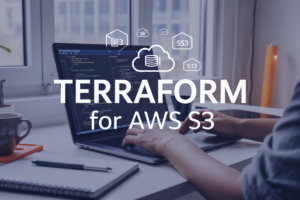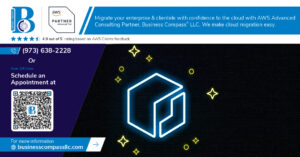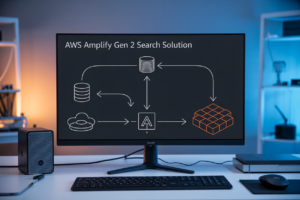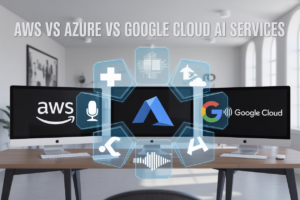Many organizations struggle with cloud architecture because they’re stuck applying old-school IT approaches to modern cloud environments. This disconnect leads to bloated costs, security gaps, and missed opportunities for innovation.
This guide is for IT leaders, cloud architects, and development teams who want to break free from legacy thinking cloud migration mistakes and unlock the true potential of modern cloud practices. You’ll learn practical strategies to transform your approach and build systems that actually work in the cloud.
We’ll explore how to spot the legacy thinking patterns sabotaging your cloud success and show you why lift-and-shift approaches often backfire. You’ll discover proven cloud-native design principles that reduce complexity while improving performance. We’ll also cover how to completely rethink your cloud security strategy and cloud cost optimization approach, moving beyond traditional perimeter-based models to embrace modern, distributed architectures that scale with your business.
Identify Legacy Thinking Patterns That Harm Cloud Success
Lift-and-shift mentality that ignores cloud-native benefits
Moving applications directly to cloud infrastructure without redesigning them wastes the transformative power of modern cloud platforms. This approach treats cloud servers like expensive data center replacements, missing opportunities for auto-scaling, serverless functions, and managed services that reduce operational overhead while improving performance.
Over-provisioning resources based on on-premises habits
Legacy thinking drives teams to purchase fixed capacity based on peak usage scenarios, mirroring traditional server procurement patterns. Cloud architecture thrives on elastic scaling and pay-per-use models. Organizations clinging to static resource allocation burn through budgets while their applications sit idle, completely defeating cloud cost optimization principles.
Traditional monolithic application design approaches
Building massive, tightly-coupled applications in cloud environments creates unnecessary complexity and limits scalability. Monolithic designs prevent teams from leveraging containerization, microservices, and distributed architectures that make cloud-native design so powerful. These legacy patterns force entire applications to scale together, wasting resources and creating single points of failure.
Rigid security models that block cloud flexibility
Traditional perimeter-based security models clash with cloud’s distributed nature and shared responsibility frameworks. Legacy security approaches often involve recreating data center firewall rules and VPN requirements, blocking the agility that cloud platforms provide. Modern cloud security strategy embraces zero-trust architectures, identity-based access controls, and automated compliance monitoring instead of restrictive network barriers.
Embrace Cloud-Native Architecture Principles
Design for horizontal scaling and elasticity
Cloud-native architecture thrives on horizontal scaling rather than vertical scaling approaches common in legacy systems. Instead of upgrading server hardware when demand increases, modern cloud practices distribute workloads across multiple instances that automatically scale based on real-time metrics. Elastic Load Balancers distribute traffic intelligently while Auto Scaling Groups add or remove instances dynamically. This approach handles traffic spikes seamlessly without manual intervention, reducing costs during low-demand periods and maintaining performance during peak usage.
Implement microservices for improved modularity
Breaking monolithic applications into microservices transforms how teams develop and deploy software. Each microservice handles a specific business function, communicates through APIs, and can be developed, tested, and deployed independently. This modular approach enables teams to use different programming languages and databases for different services based on optimal fit rather than organizational constraints. When one service experiences issues, other services continue operating normally, improving overall system resilience and reducing blast radius during failures.
Leverage serverless computing for cost efficiency
Serverless computing eliminates infrastructure management overhead while providing automatic scaling and pay-per-execution pricing models. AWS Lambda, Azure Functions, and Google Cloud Functions execute code only when triggered, charging for actual compute time rather than idle server capacity. This approach works particularly well for event-driven workloads, API backends, and data processing tasks. Teams can focus on writing business logic instead of managing servers, while costs align directly with actual usage patterns rather than provisioned capacity.
Adopt containerization for consistent deployment
Containers package applications with all dependencies, ensuring consistent behavior across development, testing, and production environments. Docker containers eliminate “it works on my machine” problems by creating portable, lightweight environments that run identically anywhere. Kubernetes orchestrates container deployment, scaling, and management across clusters, providing rolling updates, health checks, and service discovery capabilities. Container registries enable teams to version and distribute applications efficiently, while container scanning tools integrate security checks directly into deployment pipelines.
Transform Your Security and Compliance Strategy
Shift from perimeter-based to zero-trust security models
Traditional security models assume everything inside your network perimeter is trustworthy – a dangerous assumption in modern cloud environments. Zero-trust architecture treats every user, device, and connection as potentially compromised, requiring verification at every access point. Cloud-native security means implementing identity-based access controls, micro-segmentation, and continuous authentication rather than relying on firewalls alone. Your cloud security strategy should verify identity first, grant minimal necessary permissions, and monitor all activities in real-time.
Implement automated compliance monitoring and reporting
Manual compliance checks become impossible at cloud scale, where infrastructure changes happen continuously through automated deployments. Cloud-native compliance tools provide real-time visibility into your security posture, automatically flagging configuration drift and policy violations. These solutions integrate directly with your cloud architecture to monitor resource configurations, access patterns, and data handling practices without slowing down development teams. Automated reporting ensures you maintain audit trails and can demonstrate compliance to stakeholders without manual effort.
Use cloud-native identity and access management solutions
Legacy directory services weren’t designed for distributed cloud environments where users access resources from multiple locations and devices. Cloud-native identity management platforms provide centralized authentication with federated access across all your cloud services and applications. These solutions support modern authentication methods like multi-factor authentication, single sign-on, and risk-based access policies that adapt to user behavior and context. Your identity strategy should eliminate shared accounts, implement least-privilege access, and provide seamless user experiences across cloud services.
Optimize Cost Management Through Modern Practices
Implement Dynamic Resource Allocation and Auto-Scaling
Cloud cost optimization starts with breaking free from fixed capacity mindsets. Traditional on-premise thinking leads to overprovisioning resources “just in case,” but cloud-native design enables dynamic scaling based on actual demand. Configure auto-scaling groups that expand during traffic spikes and contract during quiet periods. Set CPU, memory, and custom metric thresholds that trigger scaling events automatically. This approach eliminates waste from idle resources while ensuring performance during peak loads. Your applications should breathe with demand patterns rather than sitting at constant capacity.
Use Reserved Instances and Spot Pricing Strategically
Smart cloud cost optimization combines predictable and variable pricing models for maximum savings. Reserve instances for baseline workloads that run consistently, securing up to 75% discounts on steady-state compute needs. Deploy spot instances for batch processing, development environments, and fault-tolerant applications where interruptions won’t impact business operations. Create hybrid architectures that blend on-demand, reserved, and spot pricing across different workload types. This strategic mix reduces overall compute costs while maintaining reliability where it matters most.
Establish Real-Time Cost Monitoring and Alerting Systems
Legacy thinking treats cost management as a monthly surprise, but modern cloud practices demand continuous visibility. Implement real-time cost monitoring dashboards that track spending across services, projects, and teams. Set up automated alerts when spending exceeds predefined thresholds or shows unusual patterns. Tag all resources consistently to enable granular cost attribution and chargeback mechanisms. Use cloud-native monitoring tools that provide immediate insights into cost drivers, allowing teams to course-correct before budgets spiral out of control.
Create FinOps Practices for Continuous Optimization
Modern cloud transformation requires dedicated FinOps practices that unite finance, engineering, and operations teams around cost accountability. Establish regular cost review cycles where teams analyze spending patterns and optimization opportunities. Create cost governance policies that require architectural reviews for new services and spending approvals for resource changes. Train development teams to consider cost implications during design decisions, embedding financial responsibility into the development lifecycle. This cultural shift makes cost optimization everyone’s responsibility rather than an afterthought.
Modernize Your Development and Deployment Workflows
Adopt Infrastructure as Code for consistent environments
Infrastructure as Code transforms how you provision and manage cloud resources by treating infrastructure like software. Write your infrastructure definitions in version-controlled templates using tools like Terraform, AWS CloudFormation, or Azure Resource Manager. This approach eliminates configuration drift between environments and ensures your development, staging, and production systems remain identical. Teams can review infrastructure changes through pull requests, roll back problematic deployments instantly, and spin up new environments in minutes rather than days.
Implement CI/CD pipelines with automated testing
Modern cloud deployment workflows demand continuous integration and continuous deployment pipelines that automatically validate code changes before production. Build pipelines that run unit tests, integration tests, security scans, and performance benchmarks on every commit. Cloud-native CI/CD tools like GitHub Actions, GitLab CI, or Azure DevOps integrate seamlessly with cloud services, enabling automatic deployments to multiple environments. Automated testing catches bugs early, reduces manual errors, and accelerates release cycles from weeks to hours.
Use blue-green deployments for zero-downtime releases
Blue-green deployment strategies eliminate service interruptions during updates by maintaining two identical production environments. While your live application runs on the “blue” environment, deploy new versions to the “green” environment and test thoroughly. Switch traffic instantly between environments using load balancers or DNS routing, ensuring users never experience downtime. If issues arise, roll back immediately by redirecting traffic to the previous version. This approach works particularly well with containerized applications and microservices architectures.
Establish observability with comprehensive monitoring and logging
Cloud-native applications require deep visibility into system behavior through metrics, logs, and distributed tracing. Implement monitoring solutions like Prometheus, Grafana, or cloud provider tools to track application performance, resource utilization, and business metrics. Centralize logs from all services using tools like ELK stack or cloud logging services, making troubleshooting faster and more effective. Set up intelligent alerting that notifies teams of anomalies before they impact users, and create dashboards that provide real-time insights into system health.
Create disaster recovery strategies using cloud-native tools
Cloud platforms offer built-in disaster recovery capabilities that surpass traditional on-premises solutions. Design multi-region architectures that automatically failover during outages, replicate data across availability zones, and backup critical systems continuously. Use cloud-native services like database replication, object storage versioning, and automated snapshot scheduling to protect against data loss. Test your disaster recovery procedures regularly through chaos engineering practices, ensuring your systems can handle unexpected failures gracefully.
Legacy thinking patterns can seriously damage your cloud projects. When you try to force old on-premises methods into cloud environments, you end up with expensive, slow, and fragile systems. The biggest game-changers happen when you fully embrace cloud-native principles like microservices, containers, and serverless computing. Your security strategy needs a complete makeover too – forget about network perimeters and start thinking about zero-trust models and identity-based access controls.
Cost management becomes much simpler when you use cloud-native tools and practices. Auto-scaling, right-sizing resources, and pay-as-you-go models can cut your bills dramatically compared to traditional capacity planning approaches. Your development teams will move faster with modern CI/CD pipelines, infrastructure as code, and automated testing. The cloud offers incredible opportunities, but only if you’re willing to let go of outdated practices and think differently about how you build and run applications.




















